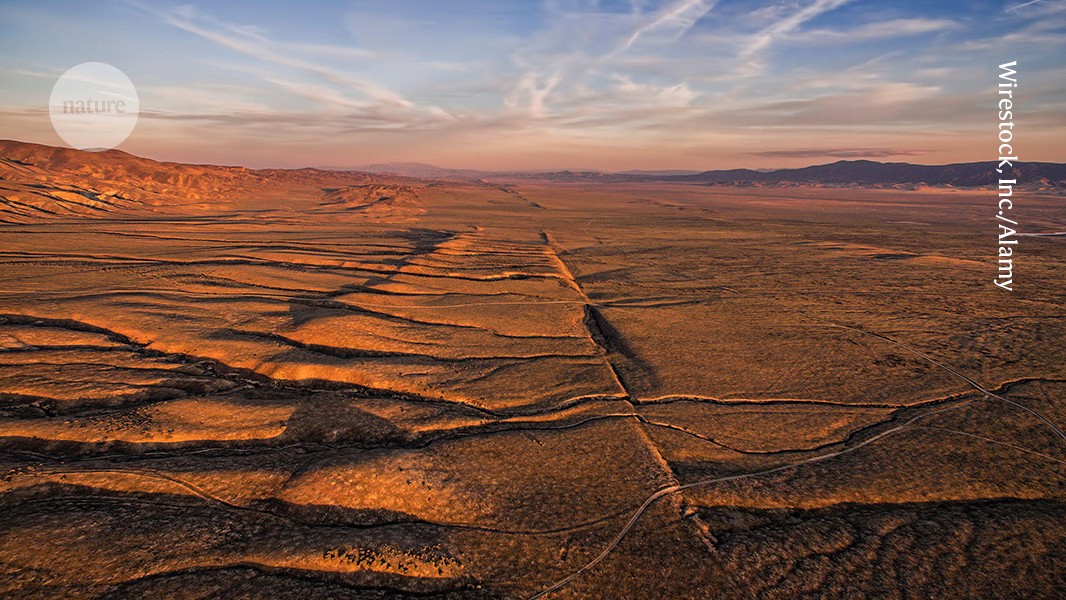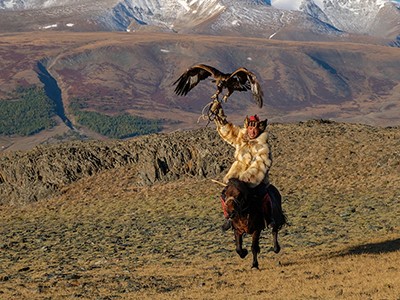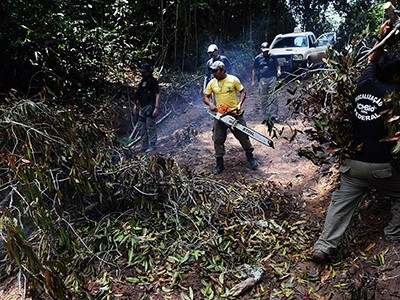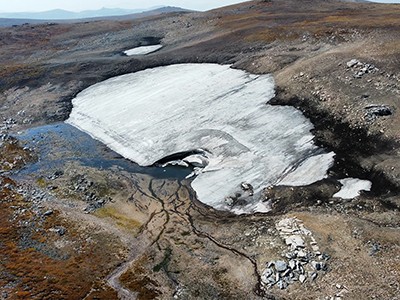Mojave Ghost Forrest Gander New Directions (2024)
In 2023, geologist and poet Forrest Gander embarked on a journey, tracing the 1,300-kilometre-long fracture of the San Andreas Fault in California from north to south. He did it as part of a quest to understand himself — a man in his late sixties, scarred by the recent deaths of his wife, the poet Carolyn D. Wright, in 2018, and of his mother during the COVID-19 pandemic in 2021.
As he walks, he begins to piece himself back together, from his origins growing up in a house in the Mojave Desert, California, to finding himself now in a new marriage and a new place, having moved back to California after teaching for many years on the east coast.
Fall of the wild: why pristine wilderness is a human-made myth
The resulting ‘novel–poem’, Mojave Ghost, is an intriguing, beguiling and thought-provoking read, especially for anyone interested in the connections between language, storytelling, nature and science. Gander relates his travels in verse, from northern California, where he now lives, to Barstow, where he was born.
Gander’s interests in geology began as a child, eating “a fistful of siltstone dust” outside his home. His mother collected bones and fossils, and a broken camel rib and mastodon tooth piqued his interest in Earth science.
He later turned to poetry as a profession and has become one of our great contemporary poets. An earlier collection of his poems won him a Pulitzer Prize. But his vision and language retain the terse precision of a scientist in the telling details of his encounters with the natural world.
“The Earth keeps stretching, knuckling, stretching out from under itself, hungry for a new shape, a new address,” he writes. “It has tossed itself loose from its sheets and risen, leaving behind a note I suppose I could read if I tried. The fissures run through everything, even through my remaining years — which I can count, probably, on my fingers.”
Deep connections
Mojave Ghost begins with an epigraph from an earlier collection of Gander’s poetry. “Isn’t it often in our most intimate relations that we come to realize that our identity, all identity, is combinatory?” he asks. This is a key to understanding Gander’s perspective and methodology.
The book is a masterpiece of using what the modernist poet T. S. Eliot called an “objective correlative” to evoke a human emotion. Eliot defined this as “a set of objects, a situation, a chain of events which shall be the formula of that particular emotion”. In other words, a kind of metaphor, drawn from the world around us, that can stand in for our own interior emotional state.
It is a powerful tool for anyone, especially scientists, who want to communicate about our complex relationship with nature. And Mojave Ghost is an object lesson in how that evocation of connection can be done artfully and powerfully. Every poem in the novel, most of which occupy a single page, deploys a beautiful, often stunning use of this technique.
“My branches bend toward the ground now,” Gander writes of ageing.
“I don’t remember having left the Earth,” he writes of an aeroplane flying over California. “And yet I must have, for I don’t recognize this place or myself. It’s as if I entered a strange forest filled with warblers, and though I suspect they’re singing, my ears are bunged with tar.”
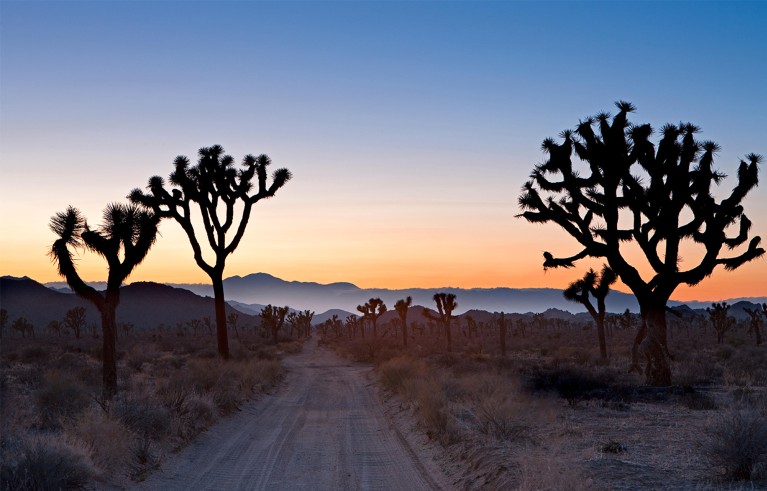
Ancient bristled trees characterize Joshua Tree National Park in the Mojave Desert, California.Credit: All Canada Photos/Alamy
The theme of fissures runs through his writing. The “stricken landscape” along the fault line might in some ways be a metaphor for the condition of the United States, Gander suggests in an author’s note at the beginning of the book.
But the San Andreas Fault also works more deeply as a parallel for Gander’s own changing understanding of his identity, and how we all compose an identity from our relationships with others and the world around us, with all of the inevitable fissures.
The Burning Earth: how conquest and carnage have decimated landscapes worldwide
What makes this collection of poems a novel? For one, taken in sequence, the poems form a narrative, even if a fragmentary one. Many of the poems read in the plain-spoken voice of prose, even with their crafty use of poetic techniques.
There is also character development. Mojave Ghost is a story of devastating loss, including the loss of Gander’s own sense of self, and of his quest to piece together a new sense of self and love and connection in a fractured landscape.
He describes falling suddenly in love again — “amazed. Like an insect blown by an updraft onto a mountain snowfield.” — with the artist Ashwini Bhat, who accompanied him on the journey.
I find this moment particularly illustrative: “Last night we parked in the roundabout at the end of the lane just listening to the hiss of sodium-vapor streetlights and watching cyclones of oak moths rising and falling. We who are also taking place in this place.”
We who are also taking place in this place. We who are forming our own identities from our relationships with each other and with the world around us. A simple moment, similar to one many of us have probably experienced or can easily imagine, suddenly filled with a deeper connection, a deeper meaning.
Natural objects as totems
In his 1962 book Totemism, French anthropologist Claude Lévi-Strauss put thinking about nature and ourselves at the very origins of human intellect, language and culture. We spend a lot of time comparing ourselves with non-human beings, creating metaphors with animals and plants, speculating about differences and similarities, and categorizing individuals and species.
Climate change reveals secrets of our ancestors hidden in the ice
In Mojave Ghost, Gander is doing something similar with inanimate aspects of nature. Indeed, any object in nature can be a ‘totem’, through which humans convey emotions, ideas and relationships.
That is why the concept of the objective correlative and Gander’s deep and creative demonstration of it could be so inspiring and useful for those aspiring to communicate about science, people and the environment in our increasingly fractious world.
Mojave Ghost is an ode to precise attentiveness and the exhilaration that can come from paying close attention and making connections and finding oneself at those intersections. If Gander’s book is hard to summarize, it is because the details matter. They are where the correspondences are located. They are the notes in a beautiful if discordant composition.
At the same time, Mojave Ghost is quite simply a beautiful novel, a narrative of coming of age, of finding one’s way, even at a late stage in life, even in a world coming apart at the seams.


